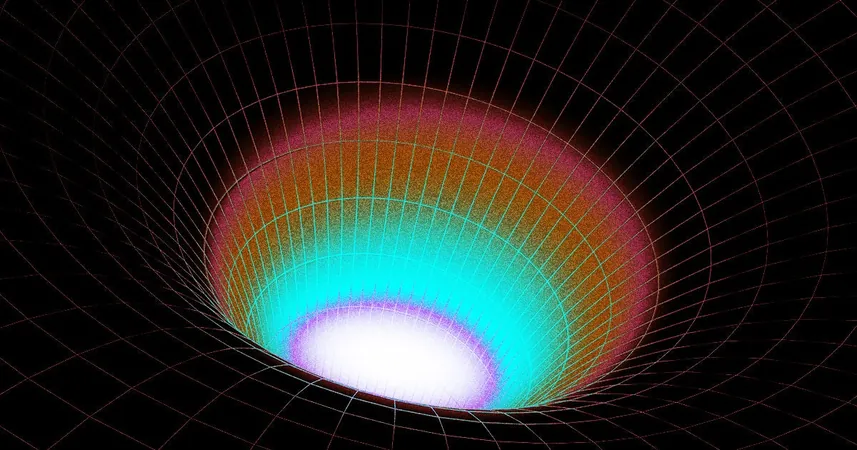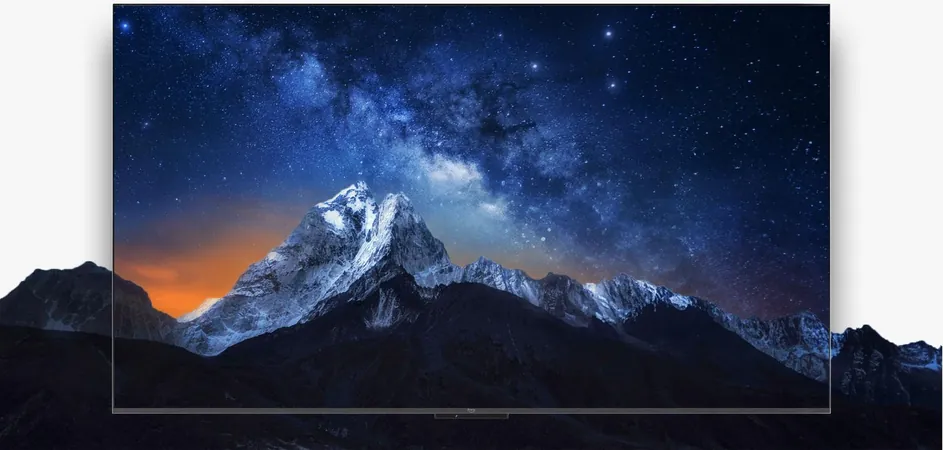
Astronomers Unveil the Mysterious "Interstellar Tunnel" in Our Cosmic Backyard!
2024-11-09
Author: Charlotte
In an astonishing revelation, astronomers have uncovered what may be an "interstellar tunnel" nestled within our solar neighborhood, hinting at a vast network of cosmic pathways that could connect us to distant star systems.
Gateway to the Stars?
According to a new study featured in the journal Astronomy & Astrophysics, the elusive tunnel exists within the bounds of the Local Hot Bubble (LHB)—a massive sphere of hot gas that envelops our solar system, stretching for hundreds of light years.
Furthermore, scientists believe this tunnel could link to an even larger bubble situated nearby, paving the way for new interstellar exploration.
Utilizing data gathered by the eROSITA telescope—the first x-ray observatory positioned entirely beyond Earth’s atmosphere—the research team was able to create a comprehensive 3D model of the LHB.
This cutting-edge technology revealed several expected features, while simultaneously exposing previously unidentified structures in this cosmic terrain.
Michael Freyberg, an astronomer with the Max Planck Institute for Extraterrestrial Physics and co-author of the study, remarked, “The discovery of an interstellar tunnel leading towards Centaurus is particularly striking as it highlights a gap within the cooler interstellar medium.
This finding was made possible due to the enhanced sensitivity of eROSITA.
The Local Bubble: A Cosmic Mystery
The concept of the Local Bubble has intrigued scientists for over fifty years, originally proposed to account for the unexplained background x-ray radiation observed in our vicinity.
With space being filled with diffuse clouds of gas and dust—the very materials that give rise to stars—scientists wrestled with the mystery of how low-energy x-ray emissions could escape absorption and reach our instruments.
The prevailing theory suggests that the Local Bubble was formed approximately fourteen million years ago, possibly by a series of supernova explosions that cleared out interstellar materials within a 1,000 light-year diameter zone.
Today, remnants of these ancient supernovae can still be observed, adding credence to this hypothesis.
While earlier theories contended that emissions could also stem from the Sun’s solar winds interacting with Earth’s outer atmosphere, newer data has reinforced the original Local Bubble idea, especially with evidence of star clusters forming along the bubble’s edges.
A Vast Interstellar Network?
The authors speculate that the newly identified interstellar tunnel could be merely a fragment of a broader, galaxy-spanning network of interstellar mediums, all orchestrated by the explosive energies unleashed by stars throughout the Milky Way.
This idea revolutionizes the way we understand cosmic connectivity and could have implications for future interstellar travel.
Furthermore, the detailed modeling of the LHB has uncovered a notable temperature gradient across the bubble.
Interestingly, the northern segment is significantly hotter than the southern part, indicating the possibility of more recent supernova events occurring within the last few million years that might have expanded and re-heated the Local Bubble.
Stay tuned as astronomers continue to probe the depths of our solar neighborhood, seeking to unravel the secrets lurking within the vastness of space.
Could this tunnel be the first step toward a grander intergalactic understanding of our place in the universe? Only time will tell!









 Brasil (PT)
Brasil (PT)
 Canada (EN)
Canada (EN)
 Chile (ES)
Chile (ES)
 España (ES)
España (ES)
 France (FR)
France (FR)
 Hong Kong (EN)
Hong Kong (EN)
 Italia (IT)
Italia (IT)
 日本 (JA)
日本 (JA)
 Magyarország (HU)
Magyarország (HU)
 Norge (NO)
Norge (NO)
 Polska (PL)
Polska (PL)
 Schweiz (DE)
Schweiz (DE)
 Singapore (EN)
Singapore (EN)
 Sverige (SV)
Sverige (SV)
 Suomi (FI)
Suomi (FI)
 Türkiye (TR)
Türkiye (TR)